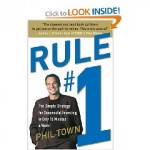 I have been asked, by way of two comments to this post, to talk a bit about my web 2.0 businesses (how I intend to make money with them) and the ‘distressed business’ that I am looking to buy … both of which I will post about, shortly 🙂
I have been asked, by way of two comments to this post, to talk a bit about my web 2.0 businesses (how I intend to make money with them) and the ‘distressed business’ that I am looking to buy … both of which I will post about, shortly 🙂
But, today I want to talk a little about residential real-estate:
I was having coffee with my builder-friend who is helping me renovate my house (hopefully, bringing a $2 million + renovation cost ‘blowout’ to a mere $1.5+ million) and his nephew-in-law happened to drop by.
He is 30, single, and wants to do his first development: he wants to purchase a block of land; subdivide it; and, put two town-houses (i.e. houses … just a little smaller than usual) on the block; then sell them.
When asked: “So? When are you building?”, he says that he has a lot of questions, and has been reading a lot of books telling him different things. He is getting confused … he is making the simple difficult … he is suffering from paralysis by analysis!
Look, this type of development is really the simplest thing in the world … even a 14 year old can do it:
My son has restarted his eBay business in Australia; he sells high-end headphones that he sources from China and sells on eBay in Australia. He buys 5 or 6 at a time (total cost = $500+) and sells each for circa $180, making around $40 profit on each. He’s 14 … he’s happy … and, as far as 14 year old standards go, he’s rich (at least, getting there).
And, it’s simple:
A. He finds a product that he wants to sell (headsets)
B. He researches the market for them (who’s selling them on eBay; for how much; and how many are being sold?)
C. He finds out how much it will cost him to buy them
D. He calculates his shipping and packaging costs (from China to Aus; from Aus to his customer)
E. He adds C. and D., subtracts the total from B. and goes ahead if the answer looks attractive (to a 14 y.o $40 a pop profit is huge)
Simple!
So it is with this type of real-estate deal (i.e. buy-to-sell, rather than buy-and-hold):
1. Find out how much your end product will sell for (drive around and look at similar brand-new town-houses for sale)?
2. Find out how much the land will cost to buy (drive around and look at blocks of land and/or tear-down houses for sale)?
3. Find out approx. how much it will cost to build (drive around and look for similar buildings going up and ask the general contractors / builders for a ball-park estimate to build similar on your land)?
4. Add 2. and 3., subtract the total from 1. and go ahead if the answer looks attractive (to a single 30 y.o. $50k – $150k profit for the whole project is huge)
If there’s any ‘secret sauce’ to this, it’s to become the expert in your end product … spend a month (max.) driving around and looking at every similar home currently for sale; get a feeling for how they look; how they are built and fitted out; see which ones sell quickly and why; and – most importantly – learn to set the right price.
The other parts will take far less time, because your goal isn’t to build at the cheapest price, or to buy the land at the cheapest price, or even to milk every drop out of the deal … it’s simply to sell for more than it cost you to buy i.e. to make a modest profit and learn from the process.
Buying real-estate – in a flat-to-rising market – to add value (by building, rezoning, rehabbing) then ‘flip’ is the easiest thing in the world … but, if you get caught up in the irrational exhuberance that always precedes a market crash, then it’s the hardest thing in the world; so buy now, or soon, when the market has only one direction to go: up!





 Flexo at Consumerism Commentary
Flexo at Consumerism Commentary